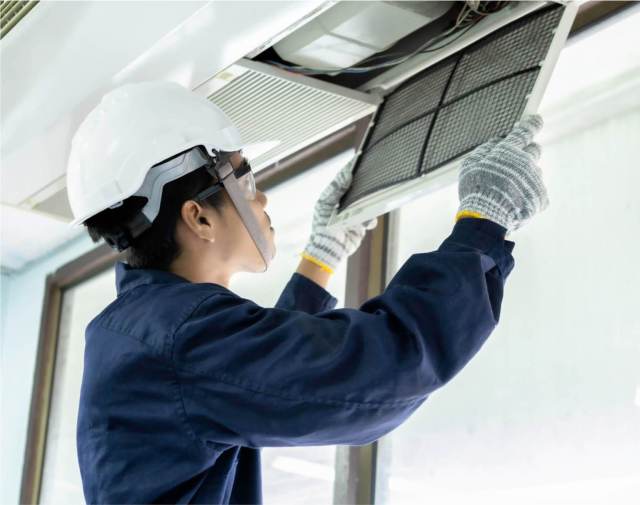Do you spend a lot of time working on projects in your garage? If so, you’ll want to think about garage ventilation and indoor air quality.
Without proper ventilation, anything from engine fumes to chemicals from stored items and even stubborn humidity can lead to health problems like strokes, heart disease, chronic obstructive pulmonary disease (COPD), and even lung cancer (source: World Health Organization).
Detached garages also get extremely hot in the summer (and you don’t want those musty smells that come with it). The solution to all of this is to ventilate your garage properly. When there is air circulation, it helps regulate the temperature inside and prevents hazardous gasses from accumulating indoors.
In this guide, we’ll show you six different ways to ensure proper garage ventilation and keep fresh air inside. But first, here’s why it matters.
Importance of Garage Ventilation
Adequate garage ventilation allows harmful fumes to escape while clean air enters the structure. If you use machinery or store chemicals like gasoline in your garage, fresh air should constantly be circulating.
If not, these chemicals can seep into your house if you have an attached garage, leading to illness from inhaling the fumes.
Mildew is another problem that can occur in poorly ventilated garages. Since molds thrive in dark, moist environments, ventilation is a must. A closed environment filled with moist air can lead to dangerous mold growth, and inhaling the spores can cause illness, breathing problems, headaches, and more.

Also, if you live in an incredibly humid climate, you definitely don’t want to neglect your garage. Stale air can become trapped inside of it and cause those unpleasant smells we know all too well.
Common Garage Ventilation Problems
A well-ventilated garage is critical for maintaining a comfortable and healthy environment. However, several common problems can hinder proper airflow and create potential hazards.
Understanding these issues lets you address them effectively and ensure optimal ventilation in your garage.
Blocked Vents
Even if your garage has vents, their effectiveness can be compromised if they’re blocked by debris, insulation, or stored items. Regular inspections and maintenance are key to ensure they are free from obstructions.
Inefficient Exhaust Fans
Exhaust fans are essential for active ventilation, but they can become inefficient over time. An undersized or outdated exhaust fan may not be powerful enough to adequately remove pollutants and regulate temperature.
Airtight Construction
Modern garages are often built with airtight seals to improve energy efficiency. While this is beneficial for reducing energy costs, it can also hinder ventilation.
If your garage is airtight, it’s crucial to incorporate active ventilation strategies, such as exhaust fans or mechanical ventilation, to ensure an adequate air exchange.
Inadequate Insulation
Poor garage insulation can exacerbate temperature fluctuations and contribute to condensation problems.
- In winter, warm, moist air can condense on cold surfaces, leading to moisture buildup.
- In summer, a poorly insulated garage can become excessively hot, increasing the risk of heat-related illnesses and damage to stored items.
An original moisture barrier improperly installed on the wrong side of garage walls will also lead to a higher likelihood of mold growth.
Lack of Air Circulation
Even with vents and active ventilation, poor air circulation can create stagnant air pockets and reduce ventilation effectiveness. Strategic placement of fans, vents, and intake openings is crucial to ensure proper air circulation throughout the garage.
Incorrectly Sized Vents
The size of your vents directly correlates to their airflow capacity. Vents too small for the garage size won’t provide adequate ventilation. The cross-sectional surface area of the vent determines how much air can pass through.
Garage Ventilation Options
Now that you know why your garage needs ventilation, the next step is to determine the best method. Here are a few options to help you figure out how to ventilate your garage:

1. Add Roof Vents
Install a ridge vent to increase the ventilation in your garage or shed. This type of vent is one of the most common exhaust vents and is installed on the peak or ridge of your garage roof. Ventilation occurs when warm air leaves the ridge vent while fresh air flows through it.

Another type is the gable vent. This one is commonly used on a gable-style roof and is visible just beneath the edge of the garage roof. Since warm air rises, this type of ventilation gives it a way to escape from the structure. Just be sure not to stack anything in front of the gable vents in your garage so the air can freely flow out.
Pros
Cons
2. Open Windows for Fresh Air
Windows are probably the easiest and most popular way to bring fresh air inside and clear out the stuffiness. Their main drawback, however, is if you live in a hotter climate. Keeping windows open may increase the heat and humidity levels inside in this case, so it’s best if you choose a different option.
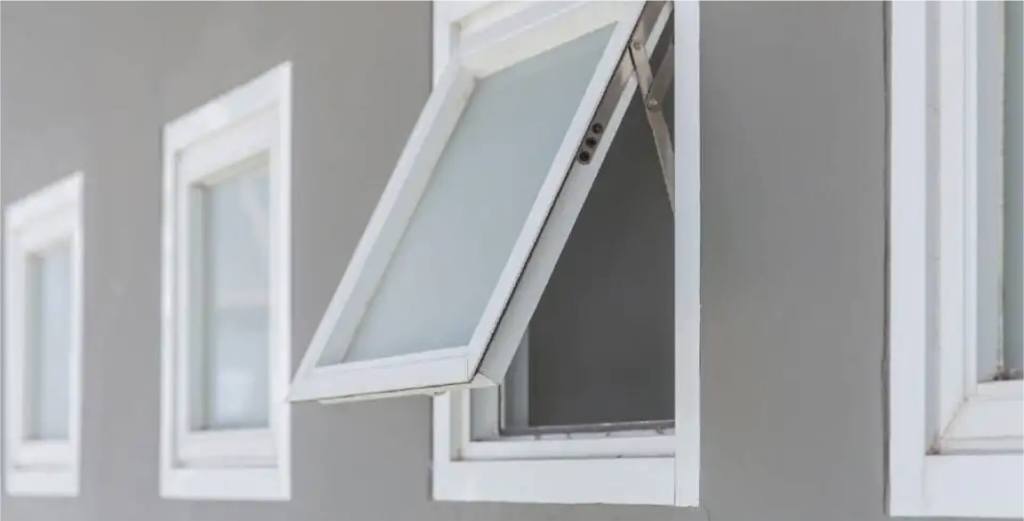
Pros
Cons
3. Use Doors to Aid Airflow
Doors are another quick and easy solution to ventilate the garage space, especially when using the garage door. Like windows, doors aren’t as effective as other options. Leaving windows and doors open may also be a security risk, depending on where you live.
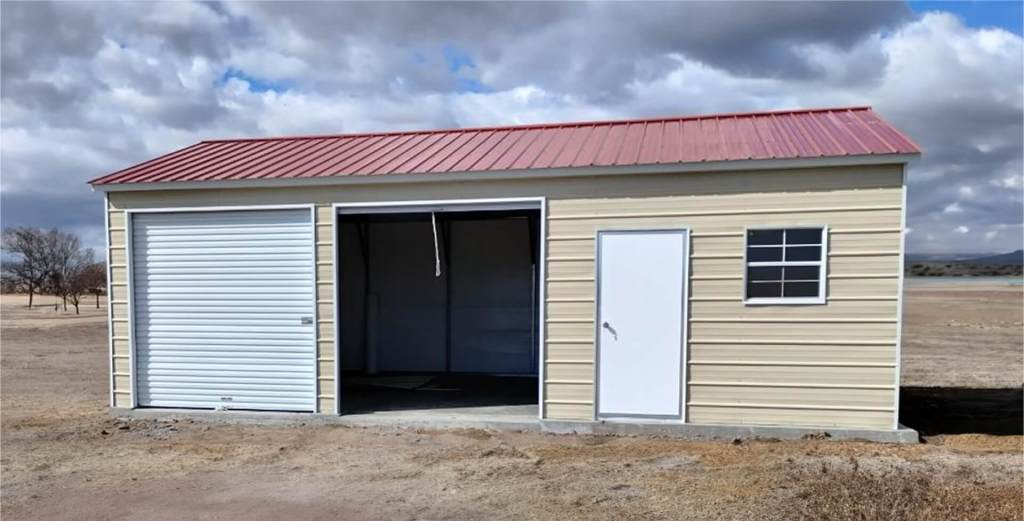
Pros
Cons
4. Install Exhaust Fans
Exhaust fans are one of the best ventilation methods for a garage in any climate. Not only do they help regulate indoor temperatures, but they also allow fumes and gasses like carbon monoxide (CO) to escape. This is extremely important for attached garages, where CO from running car engines can leak into the home and poison the air.
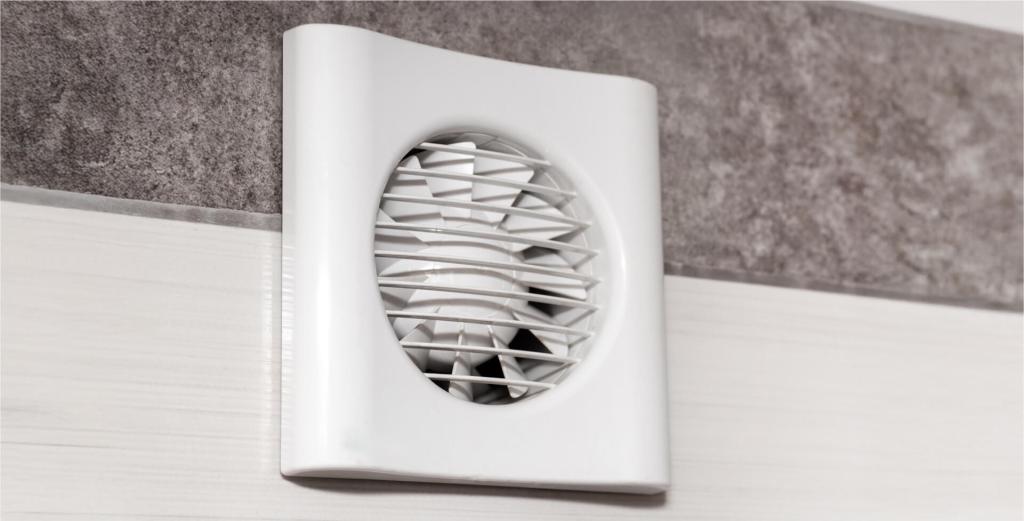
The best place to install a garage exhaust fan is high up on a wall or the ceiling, away from entryways into the home.
Pros
Cons
5. Add Floor and Ceiling Fans
In addition to exhaust fans, you can buy a floor or ceiling fan for the garage. These fans are available in various sizes and come in handy for a 2-car garage space or larger. Besides helping you keep fumes out, garage fans also create a nice breeze, keeping your garage cool on warm days.
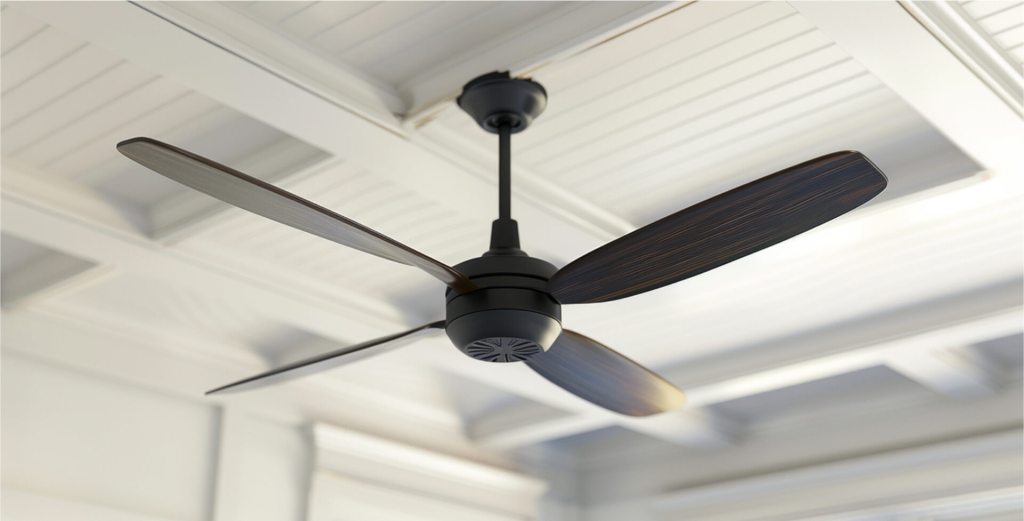
Pros
Cons
6. Mount an Air Conditioning Unit
You can get away with an unheated garage in the Southern US, but you’ll definitely need AC.
Air conditioners are often overlooked as ventilation options because their primary use is to cool and keep indoor temperatures low. However, cooler air in the garage actually helps lower indoor humidity levels, reducing mold growth potential.
Additionally, the air movement ACs cause, plus the high-efficiency particulate air (HEPA) filters they have, reduce dust and pollen in the air, leading to better air quality.
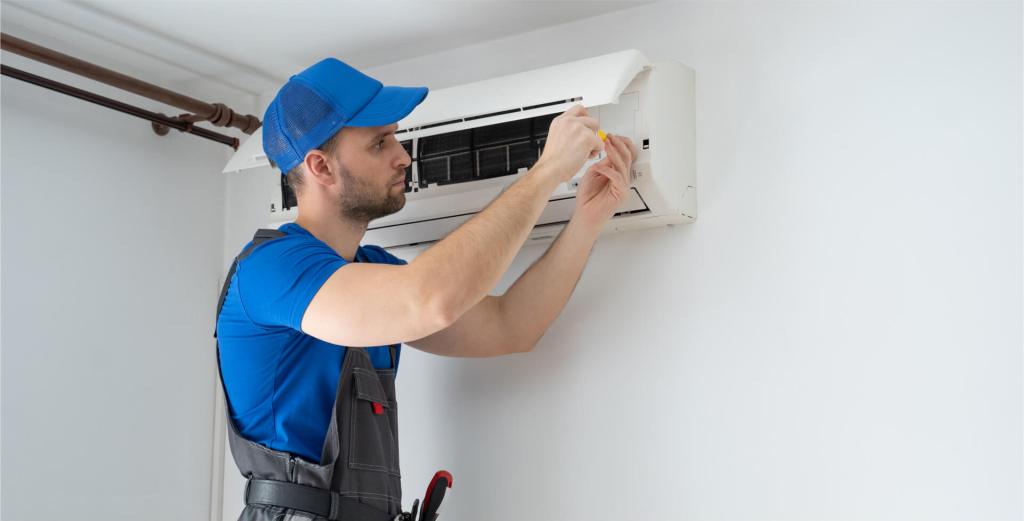
Keep in mind that air conditioning works best in an insulated garage. In an uninsulated garage, heat will enter through the garage walls, making the AC work harder to keep indoor temps cool, increasing your energy bill.
A single unit is enough to keep a 1-car garage cool, especially if you have well-insulated exterior walls.
Pros
Cons
Pro Tip: Geothermal heat pumps are a more efficient way to control the indoor temps of your garage in winter or summer. They tap into deep subsoil temps, which are almost constant all year round, providing heat during the winter and letting you dump heat during the summer. If you’re building a new garage, you can bury the heat exchanger hoses under the garage slab.
How to Ventilate Your Garage: A Step-by-Step Guide
This section provides a practical, step-by-step approach to getting proper ventilation in your garage. It will guide you through assessing your current ventilation, identifying problem areas, and implementing effective solutions.
A. Assess Your Current Ventilation in Three Steps
It’s possible that you already have good enough ventilation and may not need to make any changes. So, before ventilating your garage, you must start by finding out how much ventilation you currently have.
Here’s how:
Step #1. Observe Airflow:
- On a calm day, open your garage door and any windows.
- Light an incense stick or use a smoke pencil to visualize airflow patterns.
- Look at how the smoke moves. Does it linger, indicating stagnant air, or does it flow freely out of the garage?
Taking these steps will give you a basic understanding of your garage’s natural air circulation.
Step #2. Measure Humidity:
- Use a hygrometer or indoor humidity meter to measure the average humidity in your garage.
- Take readings at different times of day and in various weather conditions to get a comprehensive understanding of your garage’s average humidity levels.

The hygrometer should measure relative humidity (measured as a percentage) instead of absolute humidity since the former tells you how far away your indoor air is from the dew point temperature. The dew point is the temperature when water vapor starts condensing out of the air.
Ideally, aim for a humidity level between 30% and 50%. These values offer a good balance between maintaining a comfortable environment and preventing mold growth.
Step #3. Identify Potential Problems
Inspect your garage for any of the common ventilation problems discussed in the previous section, such as:
- Blocked vents
- Inadequate insulation
- Lack of air circulation
Pay close attention to the garage size and the size and placement of existing vents, as incorrectly sized vents can significantly hinder airflow (more on that below).
B. How to Ventilate Your Garage in Five Steps
If you find that the air is stagnant in certain parts of your garage and humidity levels are too high, you’ll need to take corrective measures.
Step #1. Enhance Natural Ventilation
- The easiest thing you can do is to ensure windows and doors are operational and open them whenever possible to promote cross-ventilation.
- If your garage lacks natural airflow, consider installing additional windows, exterior windows, or vents, such as gable vents, to increase the air exchange rate.
Step #2. Optimize Mechanical Ventilation
- Install or upgrade exhaust fans to actively remove stale air and pollutants, mainly if you use your garage for projects involving chemicals (like in a workshop) or if it’s exposed to auto exhaust that produces carbon monoxide.
- Choose fans with appropriate CFM (cubic feet per minute) ratings for your garage space. We’ll explain how to find out the ideal airflow rate for your garage in the next section.
- Position garage exhaust fans high on garage walls or ceilings for optimal performance.
Step #3. Promote Air Circulation
- Use ceiling-mounted exhaust fans or floor fans to circulate air and prevent stagnant pockets. This is especially important in larger garages or those with an airtight wall construction.
- Position fans strategically to improve airflow patterns and enhance the background ventilation rate.
Step #4. Moisture Prevention

- If humidity is a concern, you can use a dehumidifier to keep moisture levels optimal and prevent condensation.
- Address any moisture sources, such as leaks or condensation. Monitor indoor humidity with a humidity meter to identify potential problem areas.
Step #5. Seal Air Leaks
- Inspect your garage for air leaks around windows, doors, and walls. These leaks can contribute to high infiltration rates and reduce the effectiveness of your ventilation system.
- Seal any gaps with caulk, weatherstripping, or expanding foam to prevent unwanted air infiltration and maintain a consistent background ventilation rate.
C. Maintain Your Ventilation System
Even if you have the perfect ventilation setup for your garage, you must take care of it so it always runs at its best.
Step #1. Regularly Clean Vents and Fans

- Remove dust and debris from vents and exhaust fans to ensure optimal performance and prevent the buildup of allergens.
- Replace filters in exhaust fans as needed.
Step #2. Inspect and Maintain Equipment
- Periodically inspect your ventilation system for any signs of damage or wear.
- Ensure all components are functioning correctly to maintain adequate airflow and prevent potential hazards.
By following these steps, you can create a well-ventilated garage that is comfortable, healthy, and safe for you and your family.
Estimating Your Garage’s Air Flow For Proper Ventilation
You can estimate the CFM you need for your garage based on its volume and how many times per hour you need to replace all the air inside (the number of air changes per hour or ACH).
You can get the volume by multiplying the garage’s square footage by the ceiling height in feet.
Then, you just need to apply this simple formula:
CFM = (Room Volume in cubic feet) x (ACH) / 60
Or
CFM = (Square Footage) x (Ceiling height in feet) x (ACH) / 60
The ACH number ranges from 0.35 for living spaces inside your home (source: Environmental Protection Agency) to 9.1 for underground garages (source: Building and Environment Journal). So, for your garage at home, you can get away with an average of 5.
The following table shows the resulting CFM you need for several popular garage sizes.
| Garage Size | Square Footage | Height | Required CFM |
|---|---|---|---|
| 1-Car Garage | 240–540 | 10’ | 200–450 |
| 2-Car Garage | 360–660 | 10’ | 300–550 |
| 3-Car Garage | 600-1,260 | 10’ | 500–1,050 |
| 4-Car Garage | 800–1,600 | 10’ | 667–1,333 |
Keep in mind that your garage will have some natural ventilation. This background ventilation rate means your exhaust fans won’t need to cover all the ventilation your garage needs. So, you can get away with a lower CFM.
Garage Ventilation Safety Precautions
When properly ventilating your garage, there are some important safety tips to keep in mind, like:
- Install a carbon monoxide (CO) detector: A CO detector will alert you to dangerous levels of carbon monoxide in your garage, giving you time to evacuate and call emergency services.
- Always turn off and unplug fans: Before performing any maintenance, be sure to disconnect all power sources.
- Consider a qualified electrician: If you’re uncomfortable installing an exhaust fan yourself, consider hiring a licensed electrician to ensure it’s done safely and according to code.
- Keep flammable materials away from exhaust fans: Fumes from gasoline, paint, and other solvents can ignite near a spark from the fan motor.
- Use GFCI outlets: Consider using a Ground Fault Circuit Interrupter (GFCI) outlet for your exhaust fan, especially if there’s a risk of water exposure.
- Ensure electricity is off: If you’re installing anything yourself, you’ll likely have to work with electrical wiring during installation. That said, be sure to turn off all power to your garage.
Following these safety precautions can help avoid any costly or harmful hazards as you ventilate your garage.
Frequently Asked Questions
Whether you’re dealing with fumes and moisture or simply trying to regulate the temperature, this FAQ section answers common garage ventilation concerns.
How can I vent my garage with no windows?
Installing exhaust fans is an effective way to create garage ventilation without windows. These fans push the stale air from inside the garage outside by creating suction.
Is a garage exhaust fan worth it?
If your garage doesn’t have windows or you prefer to keep entryways shut, an exhaust fan is a worthy investment. It helps keep fumes out and regulates temperature and moisture levels.
What is the best way to ventilate my garage?
The best ventilation method will depend on your garage size, style, and personal preference. For example, you may find that both an air conditioner and an exhaust fan work well together in your space.
Do garages need to be vented?
Yes, garages need to be vented to maintain a healthy and comfortable environment. Ventilation helps remove harmful fumes, control moisture, prevent mold growth, and regulate temperature. This is especially important if you use your garage for projects, store chemicals, or have an attached garage.
How to ventilate a sealed garage?
Ventilating a sealed garage can be challenging but is essential. Consider installing exhaust fans to actively expel stale air, adding roof vents for natural convection, maximizing natural ventilation by opening doors and windows when possible, or investing in a mechanical ventilation system for optimal control.
How do you ventilate a garage to prevent mold?
Preventing mold in your garage requires a multi-pronged approach. Control humidity levels with a dehumidifier, ensure proper ventilation through a combination of natural and mechanical methods, promptly address any leaks or moisture sources, and insulate and air seal your garage to prevent condensation.
Breathe Easy In Your Ventilated Garage Space
We spend a lot of time in our garages for projects and hobbies, so it’s important that we can breathe safely inside. Doing so requires good air quality, and that means adequate garage ventilation.
Ensure proper ventilation of your garage using our 3D garage builder. Here, you can customize your garage design with windows and doors and add other features to fit your tastes.
